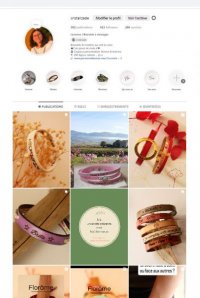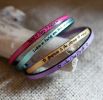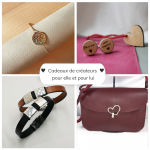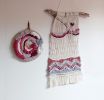Instagram in 2025: how to sell your handmade creations effectively
In 2025, the world of Instagram has come a long way. Visibility rules have changed, formats have diversified, and so have user behaviors. For craft designers, this means rethinking the way they communicate. Here's a roundup of best practices for taking advantage of Instagram this year.
The algorithm has changed: fewer likes, more readable content
Gone are the days when likes and comments reigned supreme! Today, Instagram focuses on the user experience. This translates into a greater emphasis on time spent on content, rather than the number of traditional interactions.
In other words, a post that holds attention is worth much more than a post that is quickly "liked".
In other words, a post that holds attention is worth much more than a post that is quickly "liked".
The carousel, king of viewing time
The carousel has become a flagship format. In 2025, they can contain up to 20 images, a considerable advantage for creators.
Carousels are important because they extend viewing time (a factor taken into account by the algorithm), but above all because they enable a visual story to be told around a product.
Moreover, they can be recycled into Reels, which increases their reach.
Take particular care to optimize the first 2 slides!
Carousels are important because they extend viewing time (a factor taken into account by the algorithm), but above all because they enable a visual story to be told around a product.
Moreover, they can be recycled into Reels, which increases their reach.
Take particular care to optimize the first 2 slides!
-
The
- first slide must grab attention immediately.
- The
- second slide is aimed at your subscribers. Instagram tends to show them this second image first in the News Feed.
- Use it to hook them and encourage them to scroll through the rest of the content.

The importance of audio even in carousels
Few people know it, but carousels can include audio when they appear as Reels.
this means it's a good idea to choose a popular audio track, even for a static post, as this increases your chances of visibility to a wider audience.
The power of Trial Reels: test, test, test
Instagram recently launched Trial Reels, a format designed to be shown to non-subscribers. They represent a powerful opportunity for growth.
Things to remember:
- Even if they seem to perform less well at first, Instagram favors accounts that adopt its new features.
- It's strategic to recycle an already successful video into a Trial Reel. Try changing the music, duration or even description to see what works best.
Always end with a call to action
Each post should be designed as an invitation: to a product, an offer or a subscription. Don't forget to:
- Suggest a link to your site or store.
- Encourage the user to follow the account, to register or to share.
- Direct the user to a concrete action: "Discover the complete collection", "Contact me for a personalized order", etc.
The basics: profile optimization
Optimizing an Instagram profile has a single goal: to make it clear at a glance who's behind the account and exactly what they're offering.
The different components of the profile :
The different components of the profile :
- In the visible name (in bold in theprofile) it's a good idea to include a keyword, e.g.: Julie | Bijoux bohèmes fait main
- @username: best to keep it simple, easy to search (and avoid numbers if possible)
- a profile photo: recognizable and professional. Either a clear photo to put the human face first (a smiling, pleasant person), or the logo for a clearly identified brand.
-
a concise but effective bio (in just 150 characters)
It can be structured on 3 lines:
- 1st line: What you do, example "Poetic jewelry handmade in Provence"
- 2nd line: For whom/for what, example "For those who love the unique and authentic"
- 3rd line: finish with a clear "call to action", example: "↓ Discover my boutique ↓".
The addition of emojis provides visual structure, replaces words and humanizes.

Telling a story
In 2025, Instagram is a hybrid medium between image, sound and text. To sell your handcrafted creations, it's no longer enough to publish pretty photos: you have to tell a story, captivate, and subtly encourage interaction.
A creation needs to be seen 7 times by an Internet user to be bought, so don't be afraid of getting bored, and show the same creation several times but presented from different angles, and not just visually!
You need to tell the story behind each creation, or each collection, such as: - where did the inspiration come from, what were the stages in the creation process - what is the surrounding universe - what failures have been overcome - what problem does this creation answer, - what are its advantages - who are its recipients - explain the ecological choices made for the materials used or the responsible packaging This is a bit like what we'll find in the product description, without the composition and materials.
Let's not forget what's essential: it's all about selling an emotion...
A creation needs to be seen 7 times by an Internet user to be bought, so don't be afraid of getting bored, and show the same creation several times but presented from different angles, and not just visually!
You need to tell the story behind each creation, or each collection, such as: - where did the inspiration come from, what were the stages in the creation process - what is the surrounding universe - what failures have been overcome - what problem does this creation answer, - what are its advantages - who are its recipients - explain the ecological choices made for the materials used or the responsible packaging This is a bit like what we'll find in the product description, without the composition and materials.
Let's not forget what's essential: it's all about selling an emotion...





